BCI Battery Group Size Chart and Quick Reference Guide
When it comes to choosing the right battery for your vehicle or equipment, understanding the BCI battery group size chart is essential. This guide is designed to help you quickly reference the correct battery size, ensure compatibility, and make informed purchasing decisions. Whether you're maintaining a fleet or replacing a single battery, knowing how to read and use the BCI group size chart is crucial for longevity and performance.
- What Is a BCI Battery and Why It Matters
- Understanding the BCI Battery Group Size System
- BCI Battery Chart: Group Sizes and Specifications
- Choosing the Right BCI Battery for Your Vehicle
- BCI Battery Applications by Category
- Maintenance Tips for Your BCI Battery
- Frequently Asked Questions About BCI Battery Group Sizes
- How to Read Battery Labels and Interpret Codes
- Environmental Considerations for BCI Battery Disposal
- Innovations and Trends in BCI Battery Technology
- Where to Buy a BCI Battery
What Is a BCI Battery and Why It Matters
The term BCI battery refers to the standardized battery sizes and specifications defined by the Battery Council International (BCI). This organization sets guidelines for battery group numbers that correspond to physical dimensions, terminal locations, and polarity.
These standards make it easier for manufacturers, retailers, and consumers to identify the correct battery for a given application. Whether you’re replacing a car battery, a marine battery, or even a battery for industrial equipment, the BCI group size ensures consistent fit and function.
Understanding the BCI Battery Group Size System
How BCI Battery Group Numbers Are Assigned
Each BCI battery group number identifies a specific battery size configuration. These include:
Length, width, and height
Terminal type and location
Polarity (positive/negative terminal orientation)
The group numbers are typically numeric (e.g., Group 24, Group 27, Group 31), although some include letters for special formats (e.g., Group 34R or Group U1).
Common Applications for Each Group Size
Different BCI group sizes are suited for various types of vehicles and equipment:
Group 24 and 27: Commonly found in mid-size and full-size passenger cars and trucks.
Group 31: Frequently used in commercial trucks and RVs.
Group 34 and 35: Ideal for compact vehicles and performance applications.
Group U1: Popular in lawn mowers and garden tractors.
>>See also Choosing Between Carbon Zinc and Alkaline Batteries A Complete Guide
BCI Battery Chart: Group Sizes and Specifications
To make your battery search easier, here is a BCI battery group size chart that summarizes popular group sizes and their dimensions.
|
BCI Group |
Length (inches) |
Width (inches) |
Height (inches) |
Typical Use |
|
24 |
10.25 |
6.8125 |
8.875 |
Cars, light trucks |
|
27 |
12.0625 |
6.8125 |
8.875 |
SUVs, boats, marine applications |
|
31 |
13 |
6.8125 |
9.4375 |
Commercial trucks, RVs |
|
34 |
10.25 |
6.8125 |
7.875 |
Performance vehicles |
|
35 |
9.0625 |
6.875 |
8.875 |
Compact cars |
|
U1 |
7.75 |
5.1875 |
7.25 |
Lawn and garden equipment |
Note: Always check your vehicle’s manual or manufacturer’s specifications to confirm compatibility.
Choosing the Right BCI Battery for Your Vehicle
Match Physical Dimensions First
One of the most critical factors in selecting the right BCI battery is the physical fit. The battery must align with your vehicle’s battery tray and be securely fastened.
Confirm Terminal Placement
Some batteries have terminals on the top, while others have them on the sides. Polarity is also essential—reversed terminals could cause short circuits or damage. Look for “R” in group numbers, which indicates reverse terminal placement (e.g., Group 24R).
Check Cold Cranking Amps (CCA) and Reserve Capacity (RC)
Even within the same group size, batteries may vary in performance specifications:
CCA: Critical for starting engines in cold conditions.
RC: Determines how long a battery can run essential functions if the alternator fails.
BCI Battery Applications by Category
Automotive Batteries
Cars, SUVs, and trucks use a variety of BCI battery group sizes depending on engine type, vehicle size, and electrical load. Always replace your car’s battery with the recommended group size to ensure proper fit and function.
Marine and RV Batteries
Boats and recreational vehicles often require deep cycle or dual-purpose batteries. Common sizes include Group 27 and Group 31 due to their larger capacity and durability.
Lawn and Garden Equipment
Smaller equipment like riding mowers and small tractors typically use Group U1 batteries. These are compact and designed for short, powerful bursts of energy.
Maintenance Tips for Your BCI Battery
Regularly Check Battery Terminals
Corrosion on the terminals can reduce performance. Clean with a mixture of baking soda and water, and use a terminal protector spray to prevent future buildup.
Monitor Voltage and Water Levels
If your battery is serviceable (i.e., not sealed), check the electrolyte levels and top off with distilled water if needed. Also, test voltage regularly to ensure the battery holds a charge.
Proper Storage for Longevity
If you’re storing a battery for the off-season (e.g., marine or lawn equipment), disconnect it and keep it in a cool, dry place. Use a battery maintainer or trickle charger to prevent discharge.
Frequently Asked Questions About BCI Battery Group Sizes
Can I Use a Battery From a Different Group?
It’s not recommended unless the dimensions, terminal orientation, and specifications match exactly. Always verify with your manufacturer.
Are BCI Battery Sizes Universal?
Yes, the BCI battery size standards are widely adopted across North America, which makes it easier to find replacements that fit.
What’s the Difference Between BCI and DIN Battery Standards?
BCI is used in North America, while DIN (Deutsches Institut für Normung) is common in Europe. They differ in dimensions and labeling systems.
How to Read Battery Labels and Interpret Codes
Battery labels provide valuable information beyond the group size, including:
Manufacture date
Warranty period
Performance ratings (CCA, RC, AH)
Understanding these metrics can help you choose the most reliable option for your needs.
Environmental Considerations for BCI Battery Disposal
Proper Recycling Is Essential
Lead-acid batteries are hazardous waste if disposed of improperly. Most auto parts stores and recycling centers will accept old batteries for proper disposal and often provide a discount for turning one in.
Eco-Friendly Alternatives
While traditional BCI batteries are still the norm, lithium-ion options are gaining popularity for their lighter weight and longer life—especially in marine and RV applications.
>>See also 36V LiFePO4 Cell Charge and Discharge Voltage Guide
Innovations and Trends in BCI Battery Technology
The battery industry continues to evolve. New technologies aim to improve energy density, reduce charging time, and enhance durability. Keep an eye on features like:
AGM (Absorbent Glass Mat) technology
EFB (Enhanced Flooded Battery) for start-stop vehicles
Smart battery monitoring systems
Where to Buy a BCI Battery
You can find BCI battery replacements at many national retailers, including:
AutoZone
Advance Auto Parts
O’Reilly Auto Parts
NAPA
Walmart
Online retailers like Amazon and BatteryMart
Make sure to search using your make, model, and year—or better yet, the OEM group number.
Conclusion: Trust the BCI Battery Chart for Smart Choices
In conclusion, understanding the BCI battery group size chart empowers you to make confident and informed battery purchases. Whether you're shopping for a new car battery, marine power supply, or lawn equipment battery, BCI standards provide a reliable framework for selection.
By referencing the group size chart and following compatibility guidelines, you avoid costly mistakes, improve your equipment’s performance, and extend battery life. Bookmark this guide as your go-to reference for everything related to BCI battery group sizes.

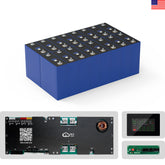

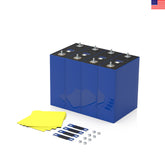

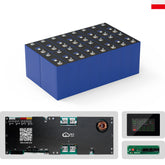

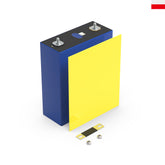

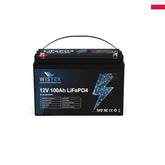
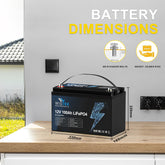
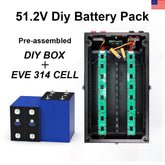

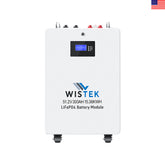
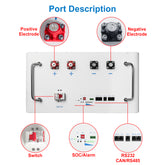
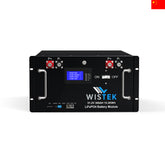
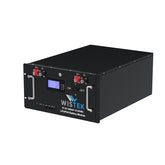


Leave a comment
All blog comments are checked prior to publishing